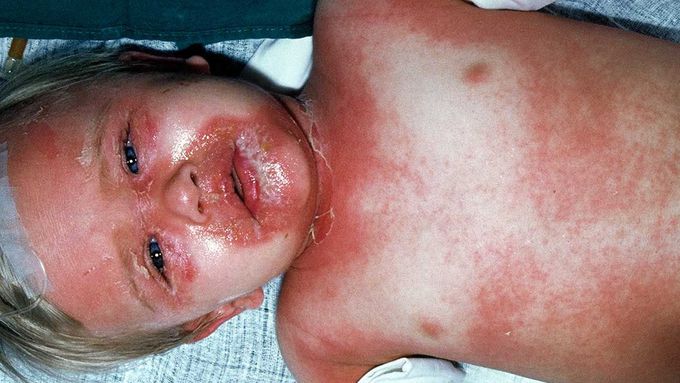


STAPHYLOCOCCAL SCALDED SKIN SYNDROME
Staphylococcal scalded skin syndrome is a potentially life-threatening disorder caused most often by a phage group II Staphylococcus aureus infection. Staphylococcal scalded skin syndrome is more common in newborns than in adults. Staphylococcal scalded skin syndrome tends to appear abruptly with diffuse erythema and fever. The diagnosis can be confirmed by a skin biopsy specimen, which can be expedited by frozen section processing, as staphylococcal scalded skin syndrome should be distinguished from life threatening toxic epidermal necrolysis. Histologically, the superficial epidermis is detached, the separation level being at the granular layer. The diffuse skin loss is due to a circulating bacterial exotoxin. The aetiological exfoliating toxin is a serine protease that splits only desmoglein 1. The exfoliative toxins are spread haematogenously from a localized source of infection, causing widespread epidermal damage at distant sites. Sepsis and pneumonia are the most feared complications. The purpose of this review is to summarize advances in understanding of this serious disorder and provide therapeutic options for both paediatric and adult patients. Recent epidemiological studies have demonstrated that paediatric patients have an increased incidence of Staphylococcal scalded skin syndrome during the summer and autumn. Mortality is less than 10% in children, but is between 40% and 63% in adults, despite antibacterial therapy. Previously, intravenous immunoglobulin had been recommended to combat Staphylococcal scalded skin syndrome, but a recent study associates its use with prolonged hospitalization.
Oh, Dear God, this poor child is sooo sick; I hope he lived!

